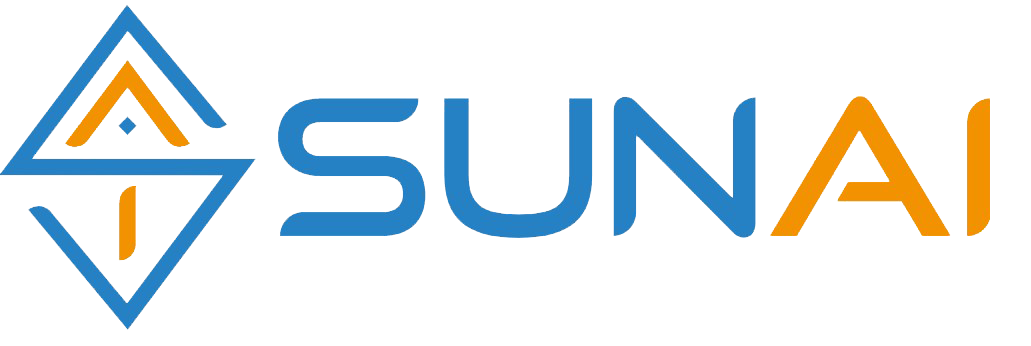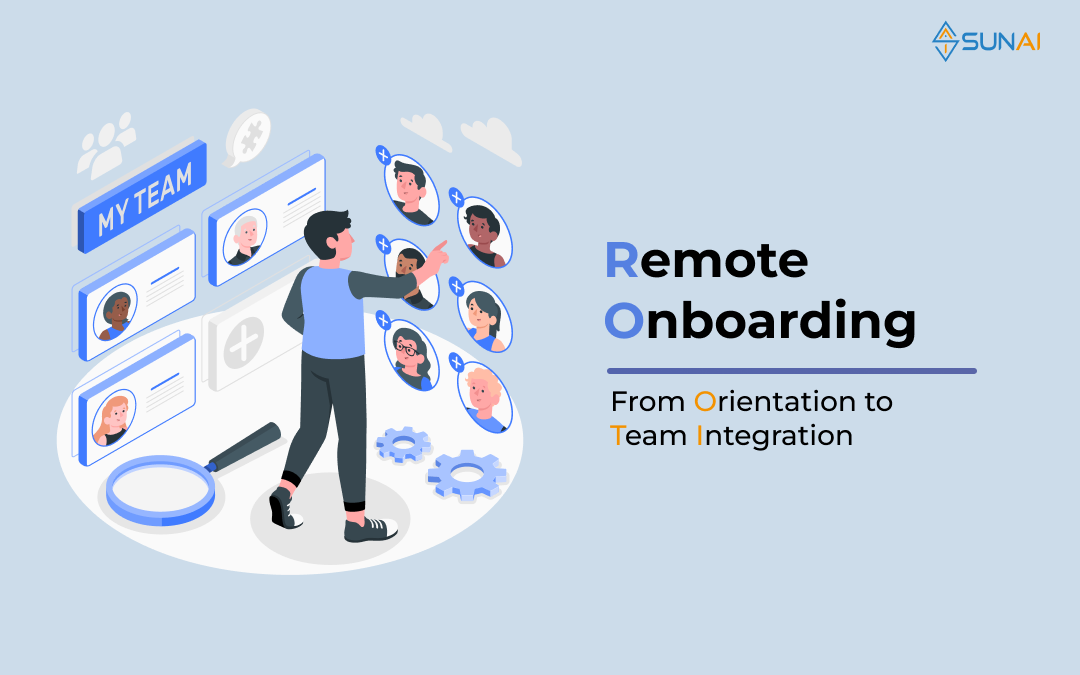In today’s dynamic work environment, the paradigm of traditional onboarding has undergone a significant shift, with remote onboarding emerging as a cornerstone for organizations embracing flexibility and talent diversity. The rise of remote work has necessitated a comprehensive reevaluation of how companies welcome and integrate new hires, transcending the physical confines of the office. As businesses continue to adapt to the evolving landscape, remote onboarding has become a crucial aspect of talent management, demanding a strategic approach to ensure seamless transitions for new employees.
The Importance of Remote Onboarding
Remote onboarding plays a critical role in setting the stage for a successful employee experience in a virtual work environment. It goes beyond simply providing access to tools and resources; it is about creating a sense of belonging and connection from day one. Effective remote onboarding can lead to increased employee engagement, productivity, and retention. It sets the tone for the employee’s relationship with the organization and their team, laying the foundation for a positive work experience.
Challenges of Remote Onboarding
Remote onboarding poses unique challenges compared to traditional onboarding processes. One of the primary challenges is the lack of physical presence and face-to-face interaction. Without the ability to meet in person, new employees may struggle to build relationships, navigate the company culture, and understand their role within the organization. Additionally, remote onboarding requires a high level of self-motivation and discipline on the part of the new hire, as they must navigate their onboarding process independently.
Another challenge is the potential for miscommunication and information overload. In a remote setting, it can be more difficult to convey information clearly and ensure that new employees have a comprehensive understanding of their responsibilities and expectations. Without the ability to ask immediate questions or seek clarification face-to-face, new hires may feel overwhelmed or uncertain about their role.
Also Read Remote Talent Acquisition: Attracting and Retaining Top Software Developers
Remote Onboarding Process
To tackle the hurdles of remote onboarding, companies should set up a clear step-by-step process. Start with solid preparation, then dive into a detailed orientation, and finally, ensure smooth integration into the team. Think of it as a roadmap to help new hires feel at home and ready to contribute, even when working from afar. This way, organizations can overcome the challenges of virtual onboarding, making the whole experience more engaging and successful for everyone involved.
Preparing for Remote Onboarding
Before a new hire’s first day, it is essential to ensure that the necessary infrastructure and tools are in place. This includes providing them with the required hardware, software, and access to relevant systems. It is also crucial to communicate expectations and provide any pre-boarding materials or resources to familiarize new hires with the company’s culture, values, and processes.
Additionally, assigning a buddy or mentor to the new employee can greatly enhance their onboarding experience. A buddy can serve as a point of contact for questions, provide guidance, and help the new hire navigate the virtual environment.
Remote Orientation Activities
Orientation is a critical component of the remote onboarding process. It is the phase where new hires are introduced to the company’s mission, vision, values, and policies. In a remote setting, orientation activities need to be adapted to ensure engagement and effective communication.
Virtual welcome sessions or webinars can be organized to provide an overview of the organization and its various departments. These sessions should involve key stakeholders, including senior leaders, to emphasize the importance of the new hire’s role within the company. It is also beneficial to include interactive elements such as virtual tours of the office or introductions to team members through video conferencing.
During orientation, it is essential to provide new hires with the necessary training and resources to perform their job effectively. This can include virtual training sessions, online courses, or access to an online knowledge base. Clear communication channels should be established to address any questions or concerns that may arise during this phase.
Implementing an Effective Remote Onboarding Process
The initial phase of remote onboarding kicks off with meticulous preparation. This entails crafting a comprehensive onboarding plan customized for the unique needs of remote team members. It’s vital to ensure that requisite equipment and technology are supplied well in advance, fostering a seamless transition into the virtual work environment. Clear communication channels should be established, serving as lifelines for effective collaboration. Equally important is the appointment of a designated contact person for new hires, providing a supportive resource to address any queries or concerns before the official start date. This thoughtful preparation lays the groundwork for a positive and organized onboarding experience.
Preparation Stage
Embarking on the journey of remote onboarding begins with meticulous preparation, a pivotal stage in creating a seamless integration process for new hires working from afar. Here, the focus is on developing a detailed remote onboarding plan tailored to meet the specific needs of virtual team members. This entails ensuring that essential equipment and technology are provided well in advance, and establishing robust communication channels to ease the transition into the new role.
Additionally, designating a reliable point of contact for new hires becomes a cornerstone, fostering a supportive environment and addressing any queries or concerns before the official start date. In the realm of remote onboarding, thoughtful preparation lays the foundation for a successful and harmonious start to the professional journey.
Orientation Stage
After laying the groundwork thoroughly, the next crucial step in the remote onboarding journey is the orientation phase. This phase becomes the gateway for new employees to delve deep into the organizational culture, values, and expectations, all from the comfort of their remote workstations. Through a blend of virtual meetings, interactive training sessions, and comprehensive onboarding materials, remote team members gain valuable insights into the company’s mission, vision, and operational procedures. This immersive experience not only fosters a sense of belonging but also aligns new hires with the organization’s objectives, setting the stage for a successful integration into the remote work environment.
Team Integration Stage
Finally, ensuring everyone feels part of the team is super important for remote onboarding success. Companies should aim to help new hires connect with their remote colleagues. This means setting up online team-building activities that everyone can join in on. Also, encouraging mentorship – where more experienced team members guide the newer ones – is a great way to build a sense of teamwork and collaboration in remote setups.
To wrap things up, if organizations stick to a well-organized remote onboarding plan that covers getting ready, learning about the company, and blending into the team, they can handle the challenges that come with remote work. Following this roadmap helps create a united and enthusiastic remote team, overcoming the difficulties that distance can sometimes bring and setting the stage for success in the world of remote collaboration.
Remote Team Integration Strategies
Ensuring that new team members fit right in is super important in remote onboarding. Team integration is like the secret sauce – it helps new folks form connections and feel like they belong. The trick is to focus on collaboration, communication, and that warm fuzzy feeling of being part of a team.
One way to do this is by scheduling regular team meetings and check-ins. These give everyone a chance to chat and share ideas. Virtual team-building activities are also a cool idea. Think virtual happy hours, online games, or working together on projects. It’s like building a virtual playground where everyone can have fun and get to know each other.
Managers play a big role too. They should encourage team members to reach out and connect with new hires one-on-one. Virtual coffee chats or casual video calls are great for this. It’s all about making things personal, so newbies feel supported and part of the gang. By weaving these strategies into the remote onboarding fabric, organizations create a friendly and connected remote team, making the challenges of distance feel a whole lot smaller.
Building Relationships Remotely
Creating connections from a distance takes some intentional effort and a sprinkle of creativity. In the virtual world, it’s not as easy to build the natural rapport and trust that comes with face-to-face talks. But fear not, because there are cool strategies to help relationships bloom, even when miles apart.
One nifty trick is setting up informal hangout spots, like virtual watercooler channels or chat groups. These are like the modern version of those spontaneous office chats. Here, team members can go beyond work talk, sharing hobbies, and building connections on a personal level.
But wait, there’s more! Virtual networking events and mentorship programs are like the superheroes of remote relationship building. These events give newbies a chance to mingle with colleagues from different corners of the organization. It’s like expanding your social circle online. Plus, mentorship programs bring a wise guide into the mix, offering valuable insights and guidance to those just starting their journey.
So, in the world of remote onboarding, where physical distance tries to play spoilsport, these strategies become magical bridges. By encouraging informal chats and organizing virtual get-togethers, organizations weave a tight-knit fabric of relationships, making remote work feel a bit more like working side by side.
Tools for Remote Onboarding
Technology plays a crucial role in enabling remote onboarding. There are various tools available that can streamline the onboarding process and enhance collaboration and communication. Here are some essential tools for remote onboarding:
- Video Conferencing Platforms:
In today’s digital age, the significance of virtual meeting platforms such as Zoom, Microsoft Teams, and Google Meet cannot be overstated. These platforms have become indispensable tools for facilitating seamless communication, enabling remote work, conducting virtual orientations, and fostering efficient team collaboration.Whether it’s a quick catch-up with a colleague, a high-stakes business meeting, or a large-scale virtual event, these platforms offer a range of features that enhance productivity and connectivity in the modern workplace. With their ability to bridge geographical gaps and accommodate diverse work schedules, they have revolutionized the way organizations operate, making them a cornerstone of modern business practices. - Project Management Tools:
Introducing new hires to tools such as Asana, Trello, ClickUp or Jira can significantly contribute to their organizational success. These platforms are designed to streamline task management, facilitate progress tracking, and foster seamless collaboration within project teams. By leveraging these tools, new employees can efficiently integrate into their roles, stay organized, and contribute effectively to the overall success of the organization. - Communication Tools:
In today’s fast-paced work environment, tools such as Slack and Microsoft Teams have revolutionized the way teams communicate and collaborate. These platforms offer a plethora of features including instant messaging, file sharing, video conferencing, task management, and integrations with other software, thereby streamlining communication and boosting productivity within teams. - Learning Management Systems:
Platforms such as Udemy, Coursera, and LinkedIn Learning offer a diverse array of online training courses and resources, making them ideal for providing new hires with comprehensive and accessible learning opportunities. These platforms enable companies to tailor training programs to suit their specific needs and ensure that employees have the necessary skills and knowledge to excel in their roles. - Virtual Collaboration Tools:
Tools such as Miro or Mural have revolutionized the way teams collaborate by providing a virtual space where members can seamlessly work together on visual projects, brainstorm ideas, and share their creativity on digital whiteboards. These platforms facilitate real-time interaction, allowing teams to ideate, plan, and innovate regardless of geographical limitations, ultimately enhancing productivity and creativity within the team.
By leveraging these tools effectively, organizations can create a seamless and engaging remote onboarding experience for new hires.
Also Read Mastering Virtual Meetings: Proven Remote Team Communication Tactics
Best Practices for Remote Onboarding
To ensure a successful remote onboarding process, organizations should follow these best practices:
- Clear Communication Channels:
To kick off a successful remote onboarding, organizations should provide crystal-clear communication paths for new hires. Clear instructions on how to seek support, ask questions, or get clarifications to a virtual roadmap, ensuring that no one feels adrift in the digital realm.
- Encourage Virtual Interactions:
Picture a workplace where distance doesn’t mean disconnection. That’s the goal! By promoting regular virtual meetings, team check-ins, and casual watercooler chats, organizations can create a culture of collaboration and communication. It’s like building a digital hangout spot that brings the team closer, no matter where they are.
- Provide Ongoing Support:
Onboarding is just the starting point. Organizations should extend a helping hand beyond the initial phase. Whether through mentorship programs, continuous training opportunities, or access to a knowledge base, ongoing support ensures that new hires feel supported and equipped as they navigate their roles remotely.
- Solicit Feedback:
Feedback is the compass that keeps organizations on the right track. Regularly checking in with new hires is crucial. It helps identify what’s working well and where there’s room for improvement. It’s like having a GPS for the onboarding journey, updating in real-time to ensure a smoother ride.
- Continuously Refine the Process:
Remote onboarding isn’t a one-and-done deal. It’s a dynamic process that evolves. Organizations should be ready to tweak and refine based on feedback, changing circumstances, and the latest industry best practices. Think of it as keeping the onboarding process in tip-top shape, ready to adapt to whatever comes its way.
By weaving these best practices into the fabric of remote onboarding, organizations don’t just welcome new hires; they set the stage for success in the virtual arena. It’s about creating an environment where every team member feels not only connected but also fully equipped to thrive in the remote work landscape.
Also Read Project Management Beyond Borders: Tips for Remote Team Success
Conclusion: Successful Remote Onboarding
The transition to remote work has presented new challenges and opportunities for organizations. Remote onboarding is a critical component of this transition, ensuring that new hires feel welcomed, supported, and connected to their teams and the organization as a whole.
By recognizing the importance of remote onboarding, understanding the challenges it presents, and implementing a well-defined process, organizations can optimize the virtual onboarding experience. With the right tools, strategies, and best practices in place, remote onboarding can foster collaboration, productivity, and a sense of belonging, ultimately leading to the success of both the employee and the organization. Embracing remote onboarding is key to thriving in the digital era and harnessing the benefits of a diverse and flexible workforce.
Learn more about remote onboarding at SUNAI, explore our about page, check out our career opportunities, or discover how we excel in offshore software development at SUNAI.







0 Comments